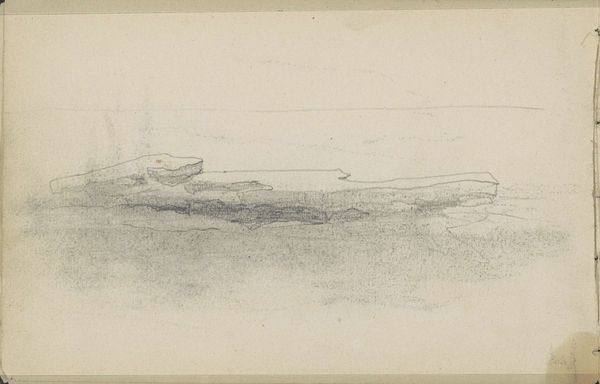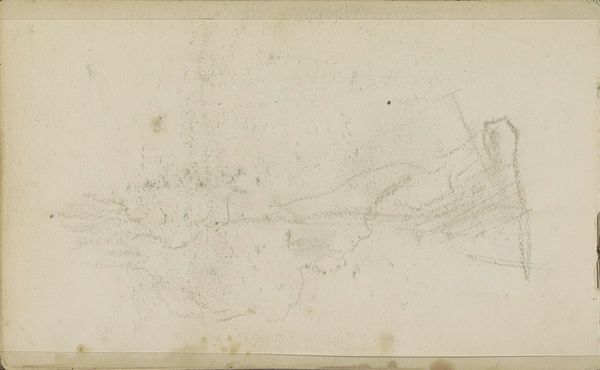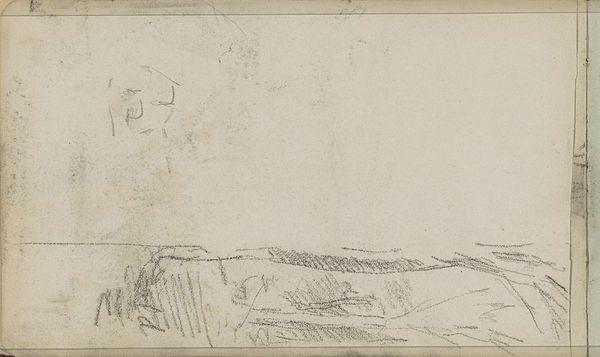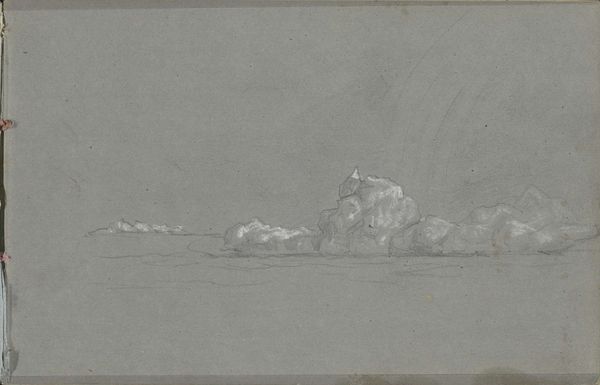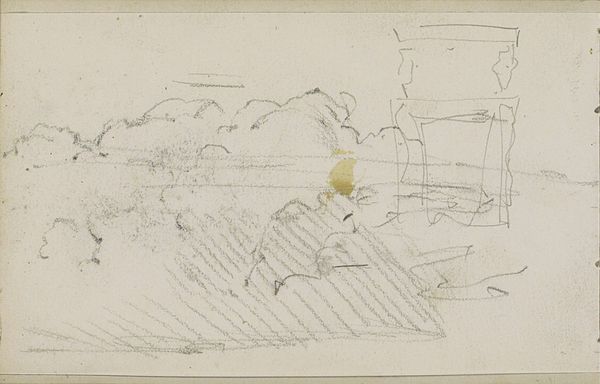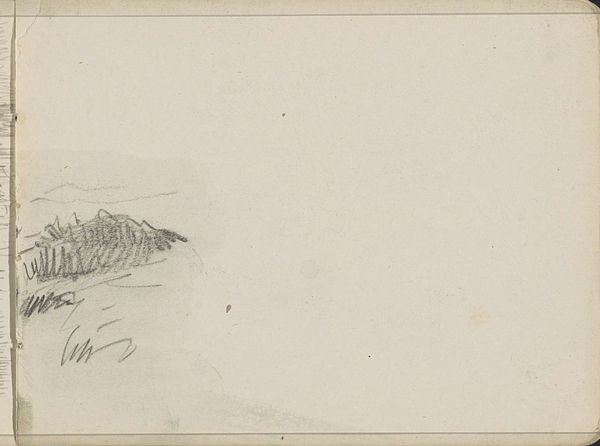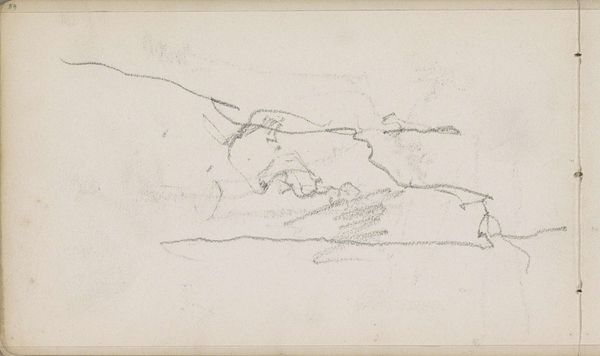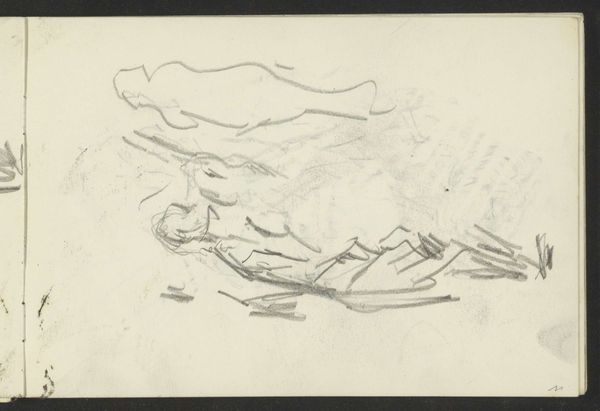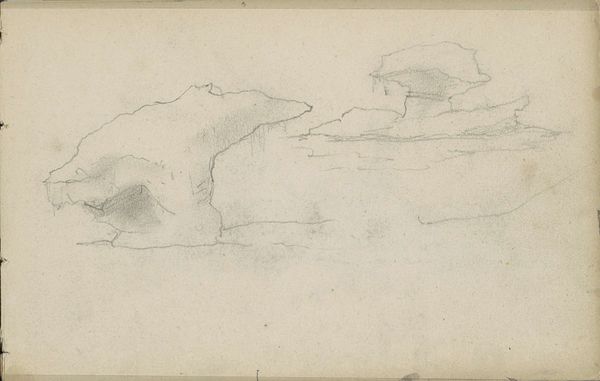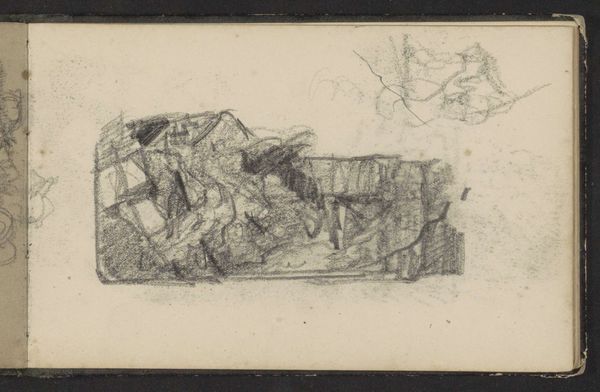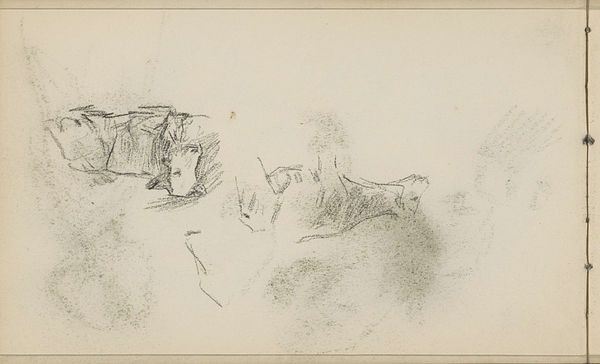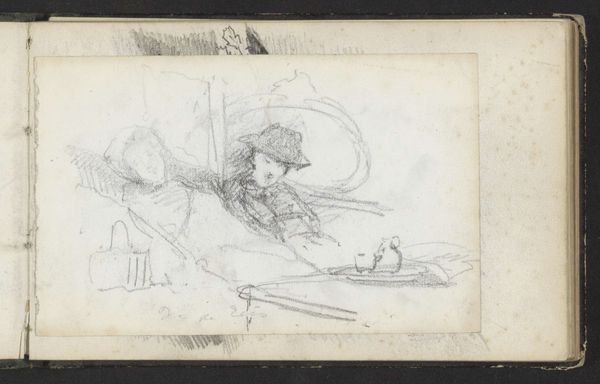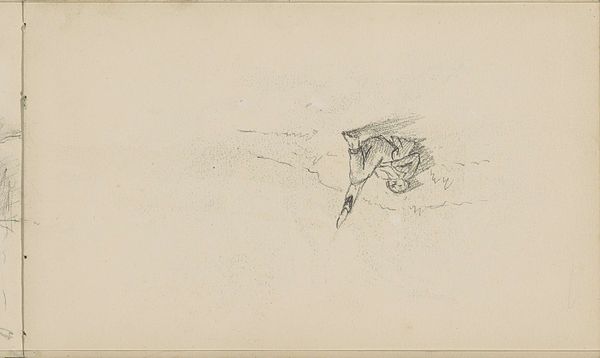
drawing, paper, pencil
#
drawing
#
pencil sketch
#
landscape
#
paper
#
pencil
#
realism
Copyright: Rijks Museum: Open Domain
Editor: Here we have Louis Apol’s “IJsbergen,” or “Icebergs,” a pencil drawing on paper from 1880. It’s a simple sketch, almost ghostly in its rendering of these Arctic forms. What do you see in this piece? Curator: It’s interesting you say "ghostly," because Apol’s work exists in a liminal space, caught between scientific observation and a romantic fascination with the sublime power of nature. Think about the context: 1880. What’s happening in Europe? Editor: Industrialization, colonization… Curator: Exactly. Apol’s icebergs aren’t just pretty pictures; they’re silent witnesses to the Anthropocene. These landscapes, which appear barren at first glance, are rich grounds to examine the impact of our dominance over natural resources and over formerly uncolonized land. How does that change your interpretation of the "simplicity" you mentioned? Editor: Well, it’s not so simple anymore. I mean, I immediately think about climate change, which completely changes the emotional register of the drawing. It is not an interesting landscape; it is a political document. Curator: Precisely! And the choice of pencil, a seemingly unassuming medium, speaks volumes about the fragility and ephemeral nature of these environments. Consider also, who has the power to represent these remote locations and whose narratives might be missing. Editor: That’s powerful. I never would have considered all of that just from looking at it initially. It gives the sketch such weight. Curator: Right. It's about acknowledging the complex histories embedded within seemingly simple representations. Art helps us reveal our connection to the changing planet.
Comments
No comments
Be the first to comment and join the conversation on the ultimate creative platform.

